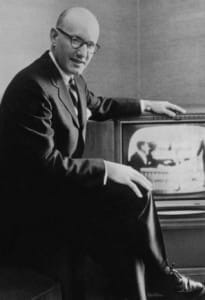The recent death of tech icon Steve Jobs overshadowed the same-week death of another innovative giant, A.C. Nielsen Jr. Even the occasional TV watcher (arguably, that includes nearly every breathing American), recognizes the life-and-death power Nielsen ratings hold over the nation’s viewing choices.
But long before Nielsen initiated its 1950 TV rating system, the company generated the largest portion of its income from the Nielsen Food and Drug Index (NF&DI), a research technique for measuring a brand’s sales at the retail level. Because the index played such an important role in my early business decisions, I’m always surprised when the average citizen unhesitatingly reels off specific TV ratings among males, 18-34, but professes total ignorance of the NF&DI. Yet to a food or drug manufacturer, details of a consumer’s purchase decisions are often far more important than details of a consumer’s viewing decisions.
When A.C. Nielsen Sr. created the NF&DI in the mid-20s, a manufacturer could easily calculate its case shipments from factory to stores. It could only intuit what happened after the grocer unpacked the case and placed those individual packages on the shelf. How many were sold? During what time period? At what price? How many remained in the store’s inventory at the end of the month? Nielsen was the first to provide answers—not only about the manufacturer’s products but about competitive products, too.
During my early career at the Nestle Co., I relied heavily on the Nielsen Food Index for market information. As a brand manager laboring in the coffee division of the world’s largest food processor, I received a monthly report on my brand’s sales versus competitors. At the detailed bi-monthly meetings, I sat alongside our president, our division chief and company research executives, all intent on the Nielsen researcher’s flip-chart review of far more than my brand’s market share.
“There’s no statistic more insidious than our out-of-stock level,” our president might say. “While that number tells you of our brand’s absence at the point of sale, it doesn’t reveal how many buyers couldn’t find our brand and then purchased a competitor’s. Far more serious, we have no way of knowing the number who preferred the competitive brand and never returned to ours.”
We brand managers responded with all sorts of incentives to motivate the sales force. We wanted to be sure the next Nielsen report showed our brand on the store shelves at all times.
Measuring what consumers buy is still at the core of Nielsen’s business today. Their scanner-based technology captures sales and price data from virtually every major retail chain. And although Steve Jobs and A.C. Nielsen Jr. died within a week of each other, there’s no indication that these two giants of the Information Age ever met.
Too bad. Nielsen was a genius at digging up information. And Jobs was a genius at helping us communicate it—right from our own homes and hands—conveniently, accurately, instantly, globally and colorfully.


























